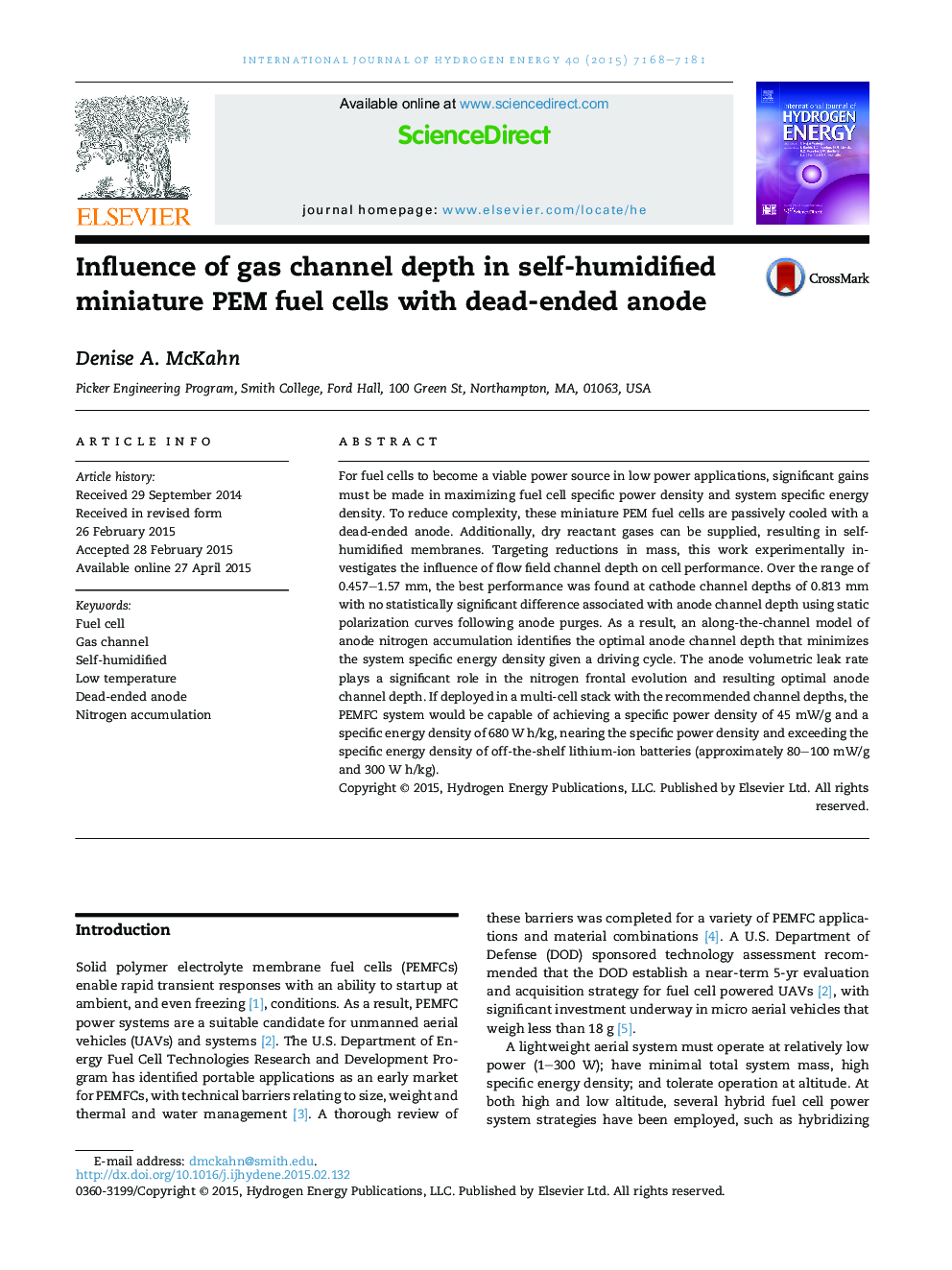| Article ID | Journal | Published Year | Pages | File Type |
|---|---|---|---|---|
| 1279900 | International Journal of Hydrogen Energy | 2015 | 14 Pages |
•We identify the optimal anode and cathode channel depths for miniature PEMFCs.•We examine the expected variability in performance for a given cell design.•Anode nitrogen accumulation and cathode dehydration are dominant channel design variables.
For fuel cells to become a viable power source in low power applications, significant gains must be made in maximizing fuel cell specific power density and system specific energy density. To reduce complexity, these miniature PEM fuel cells are passively cooled with a dead-ended anode. Additionally, dry reactant gases can be supplied, resulting in self-humidified membranes. Targeting reductions in mass, this work experimentally investigates the influence of flow field channel depth on cell performance. Over the range of 0.457–1.57 mm, the best performance was found at cathode channel depths of 0.813 mm with no statistically significant difference associated with anode channel depth using static polarization curves following anode purges. As a result, an along-the-channel model of anode nitrogen accumulation identifies the optimal anode channel depth that minimizes the system specific energy density given a driving cycle. The anode volumetric leak rate plays a significant role in the nitrogen frontal evolution and resulting optimal anode channel depth. If deployed in a multi-cell stack with the recommended channel depths, the PEMFC system would be capable of achieving a specific power density of 45 mW/g and a specific energy density of 680 W h/kg, nearing the specific power density and exceeding the specific energy density of off-the-shelf lithium-ion batteries (approximately 80–100 mW/g and 300 W h/kg).
Graphical abstractFigure optionsDownload full-size imageDownload as PowerPoint slide
